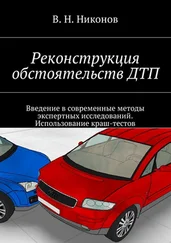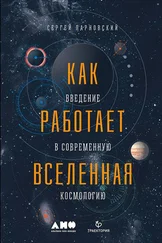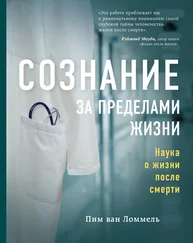Suttle C. A. Marine viruses — major players in the global ecosystem // Nature Reviews. Microbiology , 2007, V. 5, 801–812.
Eugene V., Koonin E. V., Dolja V. V. Virus world as an evolutionary network of viruses and capsidless selfish elements // Microbiology and Molecular Biology Reviews , 2014, V. 78, № 2, 278–303.
Forterre P. To be or not to be alive: How recent discoveries challenge the traditional definitions of viruses and life // Studies in History and Philosophy of Science, Part C: Studies in History and Philosophy of Biological and Biomedical Sciences , 2016, V. 59, 100–108.
Перевод мой.
Беляков С. С. Гностик из Уржума // Урал. 2003. № 5.
Salt G. Experimental studies in insect parasitism. XIII. The haemocytic reaction of a caterpillar to eggs of its habitual parasite // Proceedings of the Royal Society of London, B: Biological Sciences , 1965, V. 162, № 988, 303–318.
Stoltz D. B., Vinson S. B. Penetration into caterpillar cells of virus-like particles injected during oviposition by parasitoid ichneumonid wasps // Canadian Journal of Microbiology , 1979, V. 25, № 2, 207–216.
Edson K. M. et al. Virus in a parasitoid wasp: suppression of the cellular immune response in the parasitoid’s host // Science , 1981, V. 211, № 4482, 582–583.
Stoltz D. B. et al. Polydnaviridae — a proposed family of insect viruses with segmented, double-stranded, circular DNA genomes // Intervirology , 1984, V. 21, № 1, 1–4.
Fleming J. G., Summers M. D. Polydnavirus DNA is integrated in the DNA of its parasitoid wasp host // Proceedings of the National Academy of Sciences , 1991, V. 88, № 21, 9770–9774.
Gundersen-Rindal D. et al. Parasitoid polydnaviruses: evolution, pathology and applications: Dedicated to the memory of Nancy E. Beckage // Biocontrol Science and Technology , 2013, V. 23, № 1, 1–61.
Hayakawa Y. Growth-blocking peptide: an insect biogenic peptide that prevents the onset of metamorphosis //Journal of Insect Physiology, 1995, V. 41, № 1, 1–6.
Beckage N. E. Parasitoids and polydnaviruses // Bioscience , 1998, V. 48, № 4, 305–311
Stoltz D. B. The polydnavirus life cycle // Parasites and pathogens of insects, 1993, V. 1, 167–187.
Webb B. A. Polydnavirus biology, genome structure, and evolution // The insect viruses. Springer US, 1998, 105–139.
Federici B. A., Bigot Y. Origin and evolution of polydnaviruses by symbiogenesis of insect DNA viruses in endoparasitic wasps // Journal of Insect Physiology , 2003, V. 49, № 5, 419–432.
Webb B., Fisher T., Nusawardani T. The natural genetic engineering of polydnaviruses // Annals of the New York Academy of Sciences , 2009, V. 1178, № 1, 146–156.
Beckage N. E. Games parasites play: the dynamic roles of proteins and peptides in the relationship between parasite and host // Parasites and Pathogens of Insects: Parasites. Academic Press, 1993, 25–57.
Whitfield J. B., Asgari S. Virus or not? Phylogenetics of polydnaviruses and their wasp carriers // Journal of Insect Physiology , 2003, V. 49, № 5, 397–405.
Whitfield J. B. Molecular and morphological data suggest a single origin of the polydnaviruses among braconid wasps // Naturwissenschaften , 1997, V. 84, № 11, 502–507.
Bezier A. et al. Polydnaviruses of braconid wasps derive from an ancestral nudivirus // Science , 2009, V. 323, № 5916, 926–930.
Volkoff A. N. et al. Analysis of virion structural components reveals vestiges of the ancestral ichnovirus genome // PLoS Pathogens , 2010, V. 6, № 5, e 1000923.
Strand M. R., Burke G. R. Polydnaviruses: nature’s genetic engineers // Annual Review of Virology , 2014, V. 1, 333–354.
Strand M. R., Burke G. R. Polydnaviruses: from discovery to current insights // Virology , 2015, V. 479, 393–402.
Villarreal L. P. Can viruses make us human? // Proceedings of the American Philosophical Society , 2004, V. 148, № 3, 296–323.
Roossinck M. J. The good viruses: viral mutualistic symbioses // Nature Reviews. Microbiology , 2011, V. 9, № 2, 99–108.
Thurber R. V. et al. Virus-host interactions and their roles in coral reef health and disease // Nature Reviews Microbiology , 2017, V. 15, № 4, 205–216.
Oldstone M. B. A. Prevention of type I diabetes in nonobese diabetic mice by virus infection // Science , 1988, V. 239, № 4839, 500–503.
Stoye J. P. Studies of endogenous retroviruses reveal a continuing evolutionary saga // Nature reviews. Microbiology , 2012, V. 10, № 6, 395–406.
Villarreal L. P. et al. Virus-host symbiosis mediated by persistence // Symbiosis (Rehovot), 2007, V. 44, № 1/3, 1–9.
Gregory T. R. Synergy between sequence and size in large-scale genomics // Nature Reviews. Genetics , 2005, V. 6, 699–708.
Stoye , 2012.
Li W. et al. Human endogenous retrovirus-K contributes to motor neuron disease // Science Translational Medicine , 2015, V. 7, № 307, 307ra153-307ra 153.
Lager S., Powell T. L. Regulation of nutrient transport across the placenta // Journal of Pregnancy , 2012, V. 2012.
Mess A., Carter A. M. Evolutionary transformations of fetal membrane characters in Eutheria with special reference to Afrotheria // Journal of Experimental Zoology, Part B: Molecular and Developmental Evolution , 2006, V. 306, № 2, 140–163.
Dupressoir A., Lavialle C., Heidmann T. From ancestral infectious retroviruses to bona fide cellular genes: role of the captured syncytins in placentation // Placenta , 2012, Volume 33, Issue 9, 663–671.
Magiorkinis G., Blanco-Melo D., Belshaw R. The decline of human endogenous retroviruses: extinction and survival // Retrovirology , 2015, V. 12, № 1, 8.
Manghera M., Ferguson J., Douville R. Endogenous retrovirus-K and nervous system diseases // Current Neurology and Neuroscience Reports , 2014, V. 14, № 10, 488.
Fisher R. A. The genetical theory of natural selection. Oxford University, 1930.
Читать дальше
Конец ознакомительного отрывка
Купить книгу










